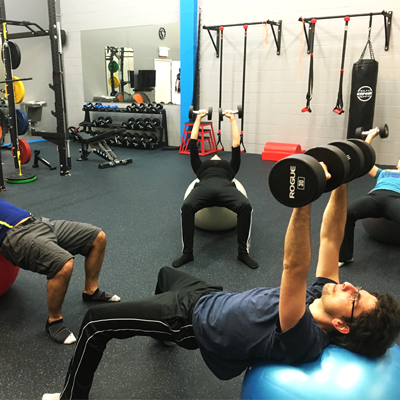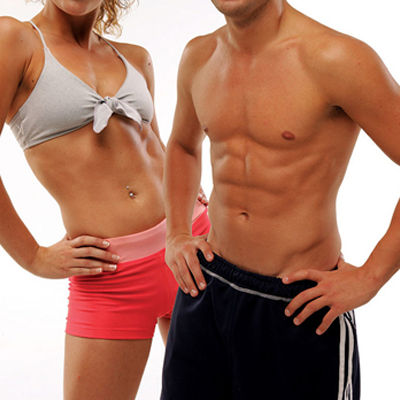
Lack of exercise is a major cause of chronic diseases, so it should only make sense for the medical community to endorse exercise as often and consistently as possible. Unfortunately, this is not always the case.
Following cardiac surgery, patients should receive clear and specific guidelines in regards to returning to physical activity and exercise. However, in the name of “playing it safe” they are often discouraged by very general and inconsistent instructions on what to avoid, along with advice that makes no sense at all. For example, some are told to not lift anything heavier than 4 lbs, when the actual door to the cardiac rehab centre in the same hospital requires close to a 15lb pull to open.1 It is difficult to justify telling patients to avoid lifting over 4 lbs in a controlled and focused exercise setting when they are bound to encounter such resistance, in an uncontrolled environment, soon after surgery. The patients leave the hospital with fear of exercise, no specific guidelines, and left to wonder if they can ever resume activities they once enjoyed.
It’s one thing to be told that you can’t play your favourite sport anymore, but what about everyday activities such as mowing the lawn? Following coronary artery bypass surgery, lawn-mowing is one of the most strongly discouraged activities even though there is evidence showing that it is quite safe.2 Overly restrictive guidelines that are not based on evidence leave patients feeling depressed and anxious, even though their surgery was deemed a success.1
The same “don’t lift heavy weights” mantra is often given to people diagnosed with osteopenia and osteoporosis. What is heavy weight? Doesn’t it vary from person to person? Of course it does. Doesn’t it depend on the type and quality of movement or activity? Sure it does. Isn’t proper intensity resistance exercise the best way to strengthen bones? Yes it is, but here again patients are being led away from it. Exercising with extremely light resistance will do little to challenge their muscles, improve their strength, and provide stability to their bones. For successful outcomes, patients need to be inspired to improve their physical performance, posture, movement mechanics, balance and muscle power- something that is quite possible to accomplish at virtually any age.3,4
Generic “play it safe” advice is not benign- it endangers patients, it weakens their resolve to take responsibility for their health, and it encourages fear over a proactive, intelligent approach that can help them recover and go back to enjoying life. Ultimately, it can lead to more anxiety and depression, both of which are associated with bad outcomes, including higher hospital readmission rates and death.1 The only thing that improves with fear of exercise are the sales of prescription medications.
Thankfully, intuition kicks in at some point. I get emails and calls from many individuals who tell me that they were once frightened to exercise, but over time they became frustrated with the feeling of being rendered powerless- a fate unknowingly inspired by their doctors- and so they started digging for more information. These patients chose to take a proactive approach and relieved their doctors from being solely responsible for their health. These are the patients that fully recover and no longer define themselves by their former diagnosis.
I leave you with this simple message:
Appreciate your surgeons and physicians for what they can do for you, but be mindful should they speak beyond their limitations, or influence you in a way that is counter-productive to your success. Ask more questions and seek a second professional opinion, ideally one that helps to empower you to take back control of your life. Not properly challenging yourself with exercise can be as harmful as exercising improperly. Well designed and safe exercise programs are possible, regardless of your physical limitations or underlying health conditions. Don’t let anyone influence you otherwise.
Marc Jaoudé
Naturopath, Health Educator
Nutrition & Exercise Specialist
Here is video reminder that no matter the health challenges we may face, we must remain proactive. My client Hymie is a perfect example. At 77 years old, after two major heart surgeries, most people would just give up. Hymie does this instead…
References:
- Parker RD, Adams J. Activity restrictions and recovery after open chest surgery: understanding the patient’s perspective. Proc (Bayl Univ Med Cent) 2008;21(4):421–425.
- Adams J, Pullum G, Stafford P, Hanners N, Hartman J, Strauss D, Hubbard M, Lawrence A, Anderson V, McCullough T. Challenging traditional activity limits after coronary artery bypass graft surgery: a simulated lawn-mowing activity. J Cardiopulm Rehabil Prev. 2008;28(2):118–121.
- Russo C. R. 2009. The effects of exercise on bone. Basic concepts and implications for the prevention of fractures. Clin. Cases Miner. Bone Metab. 6:223–228.
- Shanb AA, Youssef EF: The impact of adding weight-bearing exercise versus nonweight bearing programs to the medical treatment of elderly patients with osteoporosis. J Family Community Med, 2014, 21: 176–181.







In 2009 I had 5 bypasses, afterwards I started an exercise program which helped me recover from another major heart operation in 2015. This operation was for a replacement graft of the aortic arch, which in itself is not a very common procedure. Anyways, the next day I was sitting in a lazy boy practically the whole day and the next day was walking the halls.
On the seventh day I was on my way home from Cleveland and I attribute this fast recovery to the fact that I did training and exercise, some things were not exactly the 4 or 5 pounds recommended by the doctors.
Six weeks after returning home I was back at Marc’s gym doing training as well as exercise at home.
Thanks for sharing your story, always a pleasure training you. The years go by quick!
You always put in the work, and, as I told you today, I was thinking of you when writing this article. Well done.